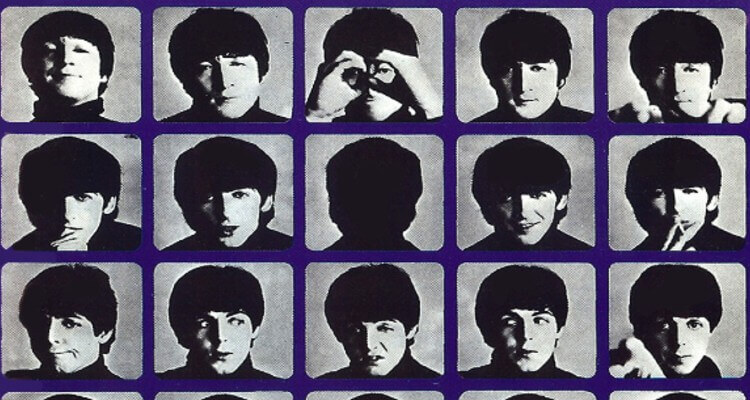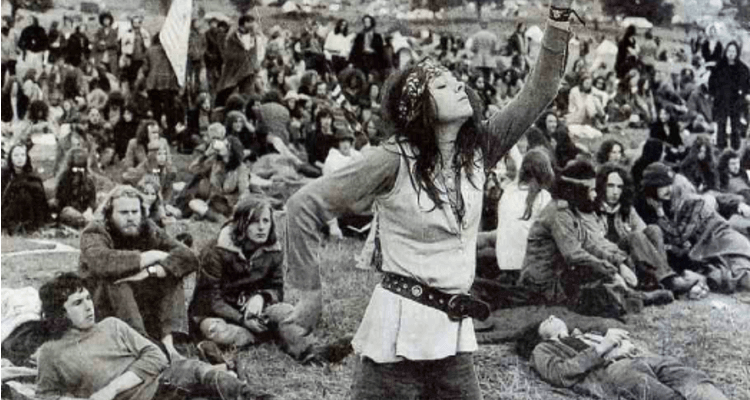Groovepunk: What Sex Tech Can Learn from the Swinging 60s
It was an era of staggering changes—is it what we need again?

The thing the sixties did was to show us the possibilities and the responsibility that we all had. It wasn’t the answer. It just gave us a glimpse of the possibility.
—John Lennon
I’ve never been nostalgic: I don’t really believe that things were ever “better” way back when. Whenever that when might be.
But, that being said, I have found myself wandering back to the 1960s, and to a certain degree the decade after. Part of it, I know, is that I was a kid for most of those years, so looking back there brings up it memories of playful innocence.
But there’s something else there as well: a quality of those years that I sincerely believe the present day world of sex tech can learn from: a way to conjure the innovation, imagination, and passion of the swinging 60s.
I believe in yesterday
Before I get too much down this white rabbit hole, rest assured that I am totally aware that I’m wearing my rose-colored granny glasses: the 60s/70s were, like every other time in history, wonderful for some, horrific for others.
Some kids, after all, had summers of loves while others, especially if they were anything but white, had to suffer through unimaginable bigotry and violence—or died in a pointless and futile war.
I also should take a moment and give a nod to my brother, who came up with the term groovepunk as a way to describe the psychedelic futurism that permeated much of those eras. Examples of which can be found on my Groovepunk-Aesthetics Tumblr.
Joy to the world

Getting back to the point, it’s easy to forget exactly how much the world changed in those few years. They were, after all, when we saw the beginnings of large-scale social activism: anti-war, environmentalism, women’s rights, gay rights, sexual liberation and exploration, and especially the civil rights movement.
Then there’s the artistic side of things: science fiction’s New Wave, bold and colorful art and artists, directors, and actors pushing the limits of stage and screen (big and small), and don’t forget the music.
This is not to say that we don’t have the same passion and vibrancy now, both politically as well as artistically. It’s just that the 60s/70s were a time when all this was being created and/or explored, pretty much from scratch. It was a time when many looked at the state of the world and asked why? And then why not?
This is my generation

Then there’s sex. Sure, often it was just hedonism and lots and lots and lots of weed (with few tabs of acid) but for others, it was an opportunity to experiment. Non-monogamy, gender fluidity (thank you, Bowie), queer activism, tribal communities, and communes—let’s give it a shot. If it works then cool, if not then no problem, man.
Then there was the future. It’s a common, and whiny trope to complain that if we’re living in 20XX, so “where (oh, where) are our jetpacks?” but while we’ve lost a lot of our big, shiny techno-futurist dreams, blaming their loss on the 60s/70s is far from fair.
Without love in the dream, it will never come true
Optimism for the coming years didn’t vanish back then but it underwent a unique transformation: instead of cleft-jawed tools of the military industrial complex mining the moon it was The Whole Earth Catalog.
Instead of brutalist beehive metropolises of sharp glass and cold steel, it was a multicultural exploration (with the help of computers) to address global problems.
The future wasn’t rejected: it was reenvisioned—and while many books and movies and shows loved to depict a doomed-earth it was more often a dire warning of what could happen if we don’t clean up our act then a real, desired expectation of the future.
Break on through to the other side

So what does this have to do with us, now—especially in this territory where sex gets it on with technology? Well, the thing that keeps coming to mind about those groovy years was a prevailing sense of change and experimentation. Why? And then why not?
Take a look at a lot of what some people are saying about sex tech. Bring up robots and you get fears of them demeaning women, leading to sexual assaults, or “is a using a robot cheating?” The same is true with everything from virtual reality to the sexual ramifications of genetic engineering: worst case scenario first, foremost and even sometimes nothing but.
It’s like we’ve become used to, and even welcome, cynicism. Optimism, especially for the future, has become something only the naive indulge in. Things aren’t just getting worse but thinking they could get better shows only how clueless you are.
True, it’s hard to think otherwise—especially considering the political climate in places like the United States right now—but that’s really no excuse: the 60s, after all, were the Beatles, the moon landing, and free love.
But also Vietnam, plus the assassinations of John F Kennedy, Robert Kennedy, and especially Martin Luther King. Those were often dark times but it was also a time to push the limits and try and to envision, and even try to make, a better world.
Let’s spend the night together

There are some, though, who—consciously or unconsciously—have the same spirit: the solarpunk movement in science fiction, the growing number of women-focused sex tech companies and their products, Black Lives Matter, #metoo, genderqueer activists, the embracing of green technologies, politicians like Kamala Harris and Alexandria Ocasio-Cortez, and many others.
Back, though, to sex and technology. We’re on the absolute edge of some absolutely amazing developments that could change the fabric of human sexuality.
Virtual reality id breaking down gender and orientation barriers. Teledildonics (also called remote sex toys) enable sex for everyone/anyone/anywhere. Smart materials and wearables are combining pleasure and fashion. Perfected implants and surgical techniques are freeing gender preferences—and creating new ones. Artificial intelligence is becoming therapist and love, and even robots who might provide love to the lonely.
But only if we want them to. If we allow knee-jerk cynicism to replace clear thinking, or cool indifference to take the place of excitement and most of all passion for why and why not then we’re going to get just that: a dull grey—and hardly sexy—future.
Instead, let’s be enthusiastic and thrilled about sex and technology. Let’s dream, imagine, experiment, and have a great time doing it: stream some Beetles, vape something interesting, binge-watch Star Trek, and think about how groovy the future’s going to be.
The Times They Are A-Changin’
Some of what those decades brought us has faded away but the spirit of that time is still here.
All we need to awaken it is to be more passionate and optimistic about the main thing the 60s taught us: that we can, and most of all should change the world for the better.
Most of my memories of the Sixties are ones of optimism, high spirits, and confidence.
—Mary Quant
Image sources: RmnG, jacinta lluch valero, Dominic Simpson, Paul Townsend, Mobilus In Mobili
Leave a reply
You must be logged in to post a comment.

















